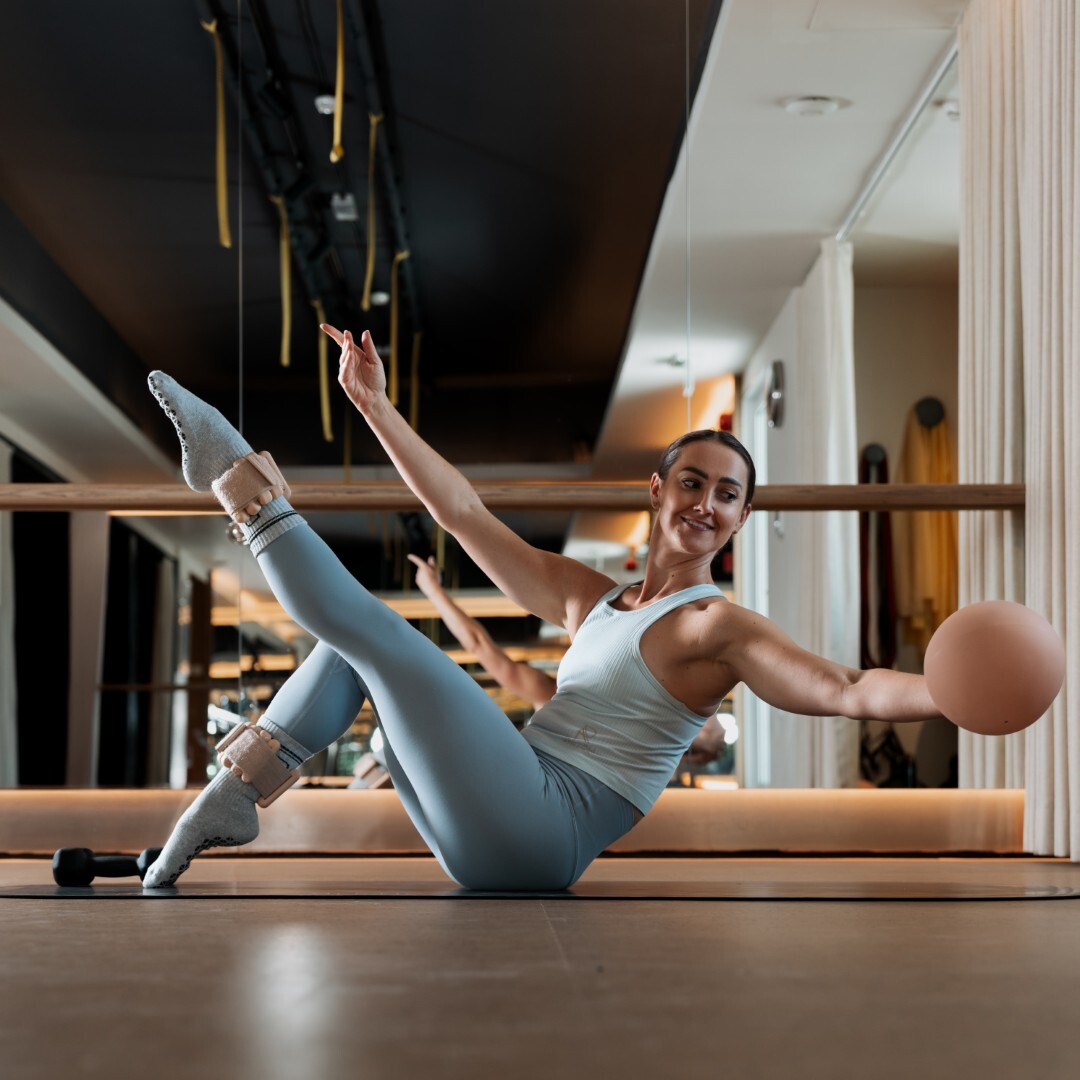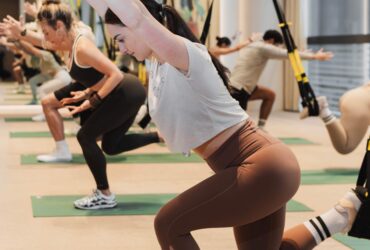
Flexibility is one of the factors that determine mobility, which dictates how well your body moves. Mobility may also have an indirect effect on flexibility. Injury can adversely affect flexibility, and injury becomes more of a risk with poor mobility.
While mobility and flexibility are related, they are not the same, which is why we prepared this mobility vs. flexibility comparison.
Key Takeaways
- Mobility and flexibility are essential to movement.
- Mobility and flexibility are related concepts, but they’re not the same.
- Mobility is more important than flexibility, but flexibility is definitely important, too.
- You can enhance both mobility and flexibility through exercise.
- You can join fitness classes to target flexibility, mobility, or both.
Reform Athletica, a premier fitness studio, provides a space where everyone, no matter their fitness level, gets the chance to transform their lives by forming a habit of movement through small-sized classes that develop and enhance both mobility and flexibility.
Our expertise allows us to appreciate the impact of mobility and flexibility on quality of life, particularly on how well the body functions and performs its necessary activities of daily living. This is why we decided to ask (and answer) what is the difference between flexibility and mobility in this straightforward flexibility vs. mobility discussion.
Table of Contents
- Is mobility the same as flexibility: What is the difference between mobility and flexibility?
- Which is more important: mobility or flexibility?
- Mobility vs. flexibility in fitness and exercise
- Frequently Asked Questions
- Develop mobility and flexibility
Is mobility the same as flexibility: What is the difference between mobility and flexibility?
Mobility is the ability to move. You have excellent mobility if you can move your joints freely, easily, actively, and in a controlled way, without being restricted by feelings of pain or discomfort. Mobility will allow you to experience your joints’ full range of motion.
A joint may be capable of the following types of motion:
- Flexion: The joint bends, and the angle of the joint decreases.
- Extension: The joint straightens, and the angle of the joint increases.
- Abduction: A jointed body part (e.g., limb) moves away from the body’s midline.
- Adduction: A jointed body part moves towards the body’s midline.
- Rotation: The body part moves in a circular movement around a joint axis.
- Circumduction: The body part moves in a circular but cone-shaped motion.
Flexibility is the ability to stretch. You have excellent mobility if you can temporarily elongate your soft tissues (e.g., muscles, tendons, and ligaments) to support your joints’ motion. This is why we say flexibility enables mobility.
Mobility vs flexibility examples
Let’s say you need to get a glass dish from your kitchen’s top shelf. In this case, the joints in your shoulders, knees, ankles, and toes may need to extend, abduct, and rotate. These require mobility.
To accommodate these joint movements, however, you may need to temporarily elongate the muscles in your trunk and limbs. This requires flexibility.
Which is more important: mobility or flexibility?
Discussions pitting flexibility versus mobility often lead to curiosity about which of the two is more important. Your limited time may require you to decide which one to prioritize.
Mobility is more important than flexibility. It’s important because:
- Mobility is functional, as it enables you to perform activities, particularly those necessary to daily living, such as bathing, dressing, eating, transferring (e.g., from the chair to the bed), and walking, among others.
- Mobility is essential for preventing injuries. If some joints lack a full range of motion, some other joints will compensate, leading to overuse or improper usage, which can lead to injuries. For instance, squatting to lift something when you have poor ankle and hip mobility puts your lower back at risk.
- Mobility ensures proper form, especially when exercising or engaging in athletic activities. When you have precise control over your body’s movements and have a full range of motion, you move more powerfully and perform better.
Flexibility enables mobility, so it is important. However, it’s just one of mobility’s components. Strength, stability, and control are also crucial to maintaining mobility.
Mobility vs. flexibility in fitness and exercise
You can develop and enhance both mobility and flexibility through physical exercise.
To develop flexibility, you can do both static stretching and dynamic stretching.
- Static stretching is stretching your muscles, tendons, or ligaments to the longest possible position and holding that elongated position for a set period (e.g., 10 seconds). An example is sitting on the floor while keeping the leg extended, and then reaching for your toes and pulling them towards you.
- Dynamic stretching is engaging in movements that will naturally stretch your muscles. You don’t elongate and hold. Instead, you move in repeating patterns that elongate and relax muscles in turns. Examples include arm circles and leg swings.
To develop mobility, you can perform:
- Dynamic stretching: Dynamic stretching prepares joints for other exercises.
- Joint-specific drills: These are exercises to improve the range of motion of specific joints. For instance, you can do the cat cow exercise (arched then bowed back) to improve spine mobility. On-the-floor hip circles improve muscle stability around the hip joint. Finally, torso twists enhance the mobility of the joints in the hip, toes, ankles, and trunk.
- Functional movements: Practice the same movements your daily activities require. These include lunges, squats, and deadlifts.
If you prefer a guided, structured approach to fitness and improving your flexibility and mobility, consider enrolling in our fitness classes.
Our microformer and strength training classes are mobility-focused.
- Microformer classes enhance mobility by improving muscle strength and stability through high-intensity movements on the Lagree Microformer and using free weights.
- Strength training classes develop mobility by making you stronger and improving your form. The exercises challenge and eventually develop the core and joint stability that you need to control your joints as you move them through their full range of motion.
Reform, sculpt, and yoga classes improve both mobility and flexibility.
- Reform classes use Pilates-inspired movements to induce muscle stretching or elongation and a moving Lagree Megaformer platform to develop strength, endurance, stability, and coordination.
- Sculpt classes combine barre, Pilates, and yoga exercises to stretch muscles, improve core stability and mobility, and enhance range of motion.
- Yoga classes let the body practice stretching, enhance its strength and balance, and improve its mobility with its poses, lengthy holds, and precise transitions.
Frequently Asked Questions
Below are answers to some of the most commonly asked mobility vs flexibility questions.
Can you have good flexibility but poor mobility?
Yes, you can have good flexibility but poor mobility. If you can readily touch your toes with your hands while sitting on the floor, you have good flexibility. However, if you struggle with standing on one leg and raising the other on a high knee (and remaining still and keeping your balance), you may have poor mobility, however balance, coordination and strength will also play a vital role.
What causes poor mobility despite being flexible?
Poor muscular strength and stability can lead to poor mobility despite being flexible. As mentioned earlier, flexibility is just one component of mobility.
Are dynamic stretches better for mobility?
Yes, dynamic stretches are better for mobility. Dynamic stretching is part of the larger category of mobility-enhancing exercises. Note that dynamic stretching also improves flexibility.
Should mobility work come before or after workouts?
Dynamic stretching exercises, which are good for mobility (but also flexibility), are best done before workouts because they can help warm up muscles. Static stretching (flexibility exercises) is best after a workout, when the muscles are warm and have been properly conditioned for stretching.
How does mobility affect injury prevention?
Mobility leads to easy, free, unrestricted, and controlled body movements. It can help prevent injuries by minimizing uncontrolled movements, preventing joint misuse and overuse and, if you’re out of balance, enabling you to gently and effectively break your fall.
Develop mobility and flexibility
Improving your mobility and flexibility is crucial to moving and functioning better and avoiding injuries. At Reform Athletica, we can help you develop both. Book a package now to join our reform, microformer, sculpt, strength, or yoga classes.












